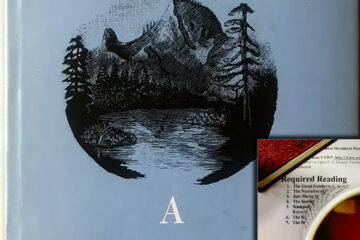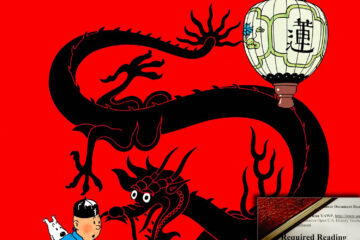Narrative of the Captivity and Restoration of Mrs. Mary Rowlandson (excerpt)
Narrative of the Captivity and Restoration of Mrs. Mary Rowlandson (excerpt) by Lauren Polli
The story of Mary Rowlandson written by Mary Rowlandson is a very intriguing and captivating story about Rowlandson’s Puritan town getting attacked by the Native Americans. She tells the story of how they came to her village and destroyed it. She says, “We looked out, several houses were burning, and the smoke ascending into heaven.” In this quote she tells about how the village was destroyed, houses were burned, and people were killed.
She then goes on to explain how she was captured and taken by them. She says, “The Indians laid hold of us, pulling me one way, and the children another.” Throughout the story, Rowlandson expresses her faith. She is a very Puritan woman, and she thinks that because this is happening to her, God is testing her. Puritans tended to believe that when anything bad happened it was a test or punishment coming directly from God. This is shown when she says, “The Lord hereby would make us the more acknowledge His hand, and to see that our help is always in Him.”
The story is broken up into different “removes” which are the different campsites she stayed at while she was with them. Rowlandson expected them to be complete savages and barbarians, but they actually treated her better than she expected. For example, they gave her food (which she refused to eat for the first week) and water everyday. And after her baby died, they showed her where her baby was buried. However, the natives were using her as a laborer, a slave of sorts. They had her do all sorts of manual labor, even on the Sabbath. And when she tried to get out of working on the Sabbath, they said they would break her face.
Rowlandson explains that the power and strength of the Lord helped her get through this horrific and traumatic experience. “The Lord renewed my strength and carried me along.” She says that He picked her up and helped her stand whenever she fell, and because of him she made it out alive.
“Faith in the Face of Catastrophe” by Janie Alexander
In Mary Rowlandson’s autobiographical story, she describes the unusual circumstances surrounding her capture by the Wampanoag. She describes the hardship of life in captivity and relies on her faith to carry her through her situation.
On February 10, 1675, Mary Rowlandson was captured by a group of Native Americans. It was a surprise attack and most everyone from her small diasporic community was captured and tortured. From that day on, Rowlandson depicted her life in an unimaginable way. Soon after being captured, she and her baby are wounded by being shot in the side. The day comes when she loses everything she owns including her family members, house, and friends. Although it is rough for the two of them, they must move on day by day with their new nomadic tribe. In addition to the emotional pain she is feeling, she is also physically exhausted by the “wearisome and tedious” days. The members of the Wampanoag tribe starve her. The notion of giving up enters her thoughts daily, but she finds a way to stay strong and relies on God to keep her moving forward.
Mary Rowlandson relies on her faith through her relationship with God, praying whenever in need, and reciting memorized scripture verses in her head. The big event that tests Rowlandson’s faith is when her baby, whom she has carried throughout the journey, dies right in front of her. This tragedy causes Rowlandson to feel an overwhelming sense of grief and her heart sinks. However, she is not ready to give up and “use violent and wicked means to end [her] own miserable life”. Mary knows that God will lead her in the right direction even in this depressing time. In other situations that include hardships, Mary depends on her faith and believes that by saving her, God is showing her signs of good news and hope. She believes that the Lord will “renew [her] strength… carry [her] along” and uphold her through the greatness of his mercy. Even after the thought of taking her own life, Rowlandson realizes that there is more to life, leaving her no chance but to stay true to God and let him lead her future.
“Narrative of the Captivity and Restoration of Mrs. Mary Rowlandson” Document Analysis by Annalisa Dagnino
Mary Rowlandson was a Colonial American woman who was captured by Native Americans in 1676 during King Philip’s War and held for eleven weeks before being ransomed. During this time, Puritans were coming to the new world in search of new opportunities and believed surviving the journey to be the will of God. These Puritans believed that if they survived the voyage across the ocean God thought they were good and wanted them to continue with their journey. If they did not survive the journey they believed God did not want them to continue on their mission. The mindset of believing life and death is the will of God consumed the Puritans in everything they did.
Mary Rowlandson’s story describes the life of someone who was captured by “barbarous creatures.” Mary was taken away from her home and watched her people die the same way the Natives did. She watched her family and neighbors get “shot down” until she became a captive of the Natives. She describes the Natives as “murderous wretches” that separate her from her children after her husband was killed. During Mary’s captivity, she tried to take care of her “sick babe” and explains how “all was gone except her life.” She finds strength in praying and said it was “the mercy of God” that she was sent a Bible to read. She looked towards her life as God believing she had been a faithful follower. Her thoughts were about her “poor children” as they were separated from her by different “wild beasts of the forest.” Mary tried to explain to her “master” that her religion would not let her work on the Sabbath. The Natives ignored her pleas and told her to continue her work. She was later ransomed by the Native and set free.
While Mary describes the extremely painful and sad details of her capture, the Natives treated the new settlers the same way they had been treated. Many of the Natives were described as “animals” because they were different from the English. Mary Rowlandson’s story sheds light on how difficult it can be for someone to be taken from their land as their loved ones are killed in the crossfire. Her story can be interpreted as the settlers getting a taste of their own medicine as the Natives finally taking their revenge on the thieves that took their sacred land.


